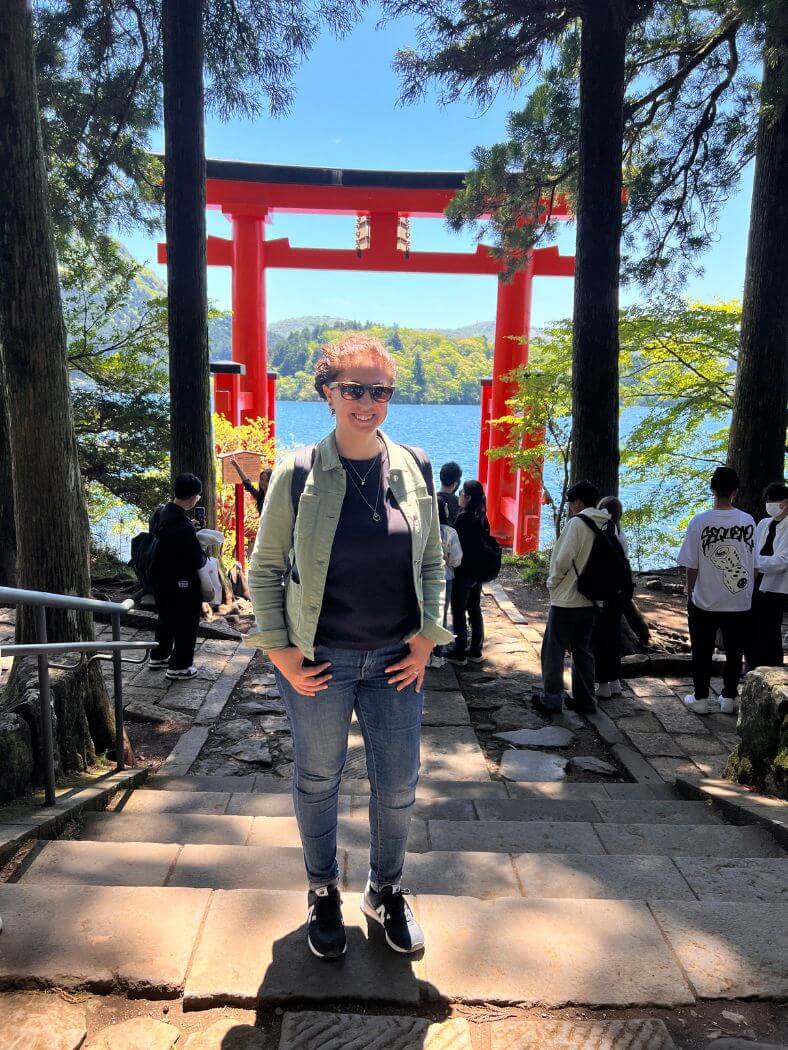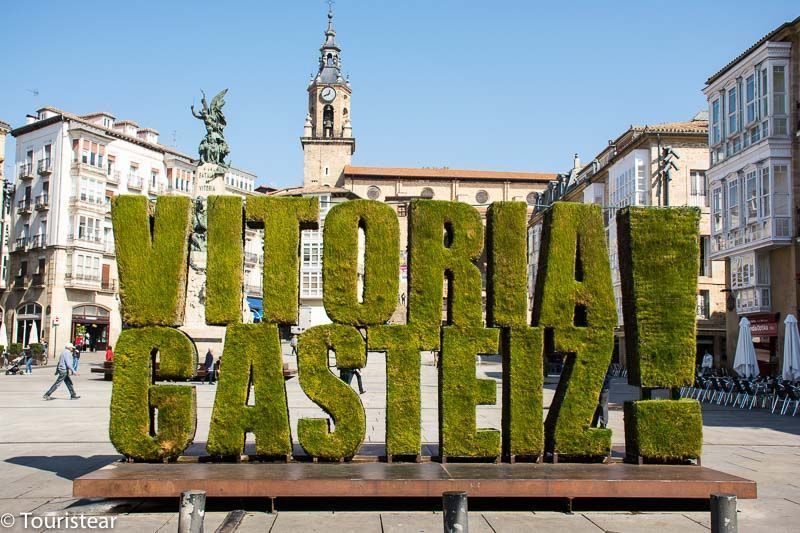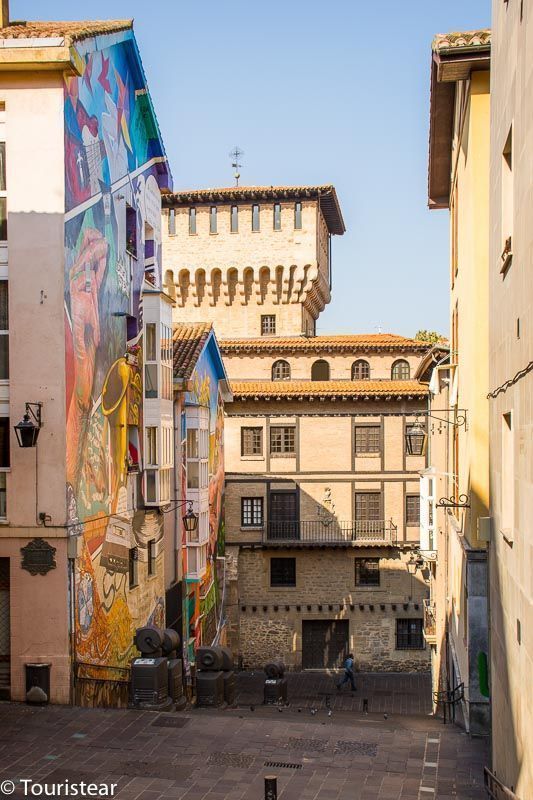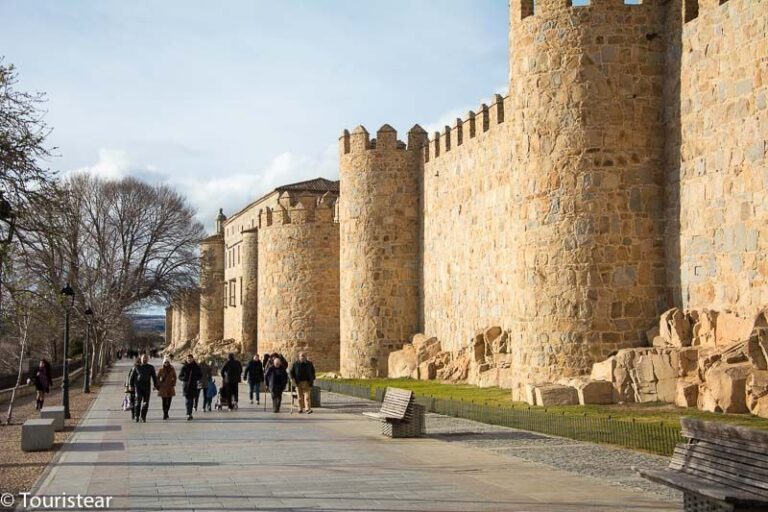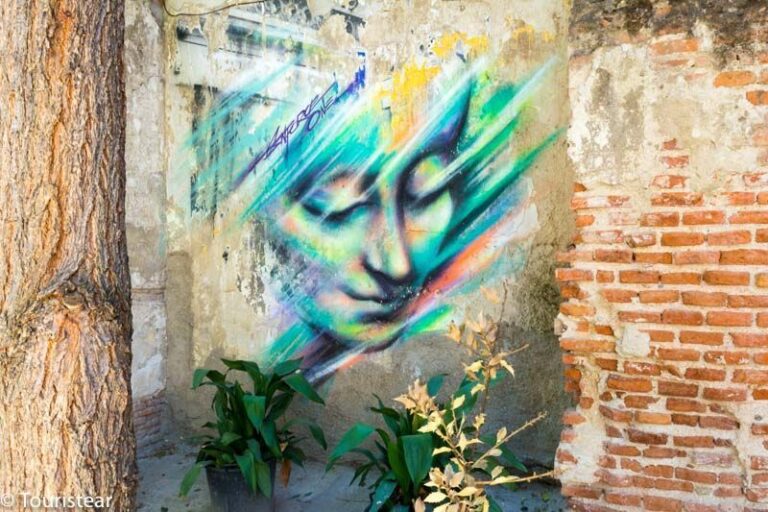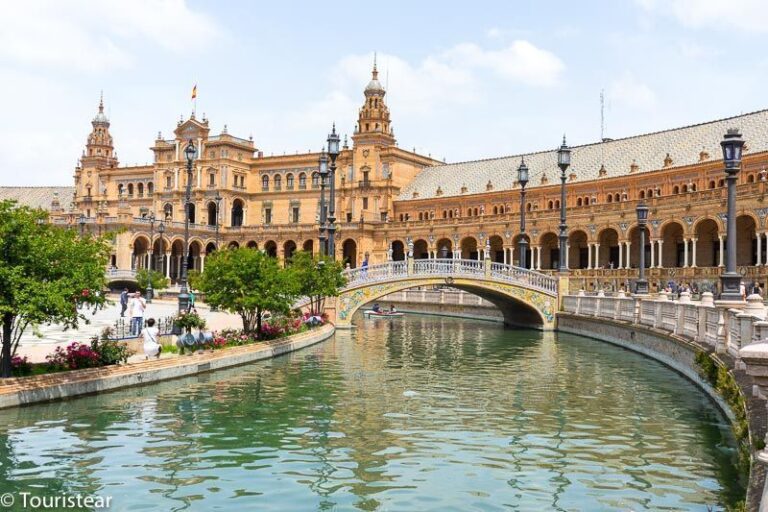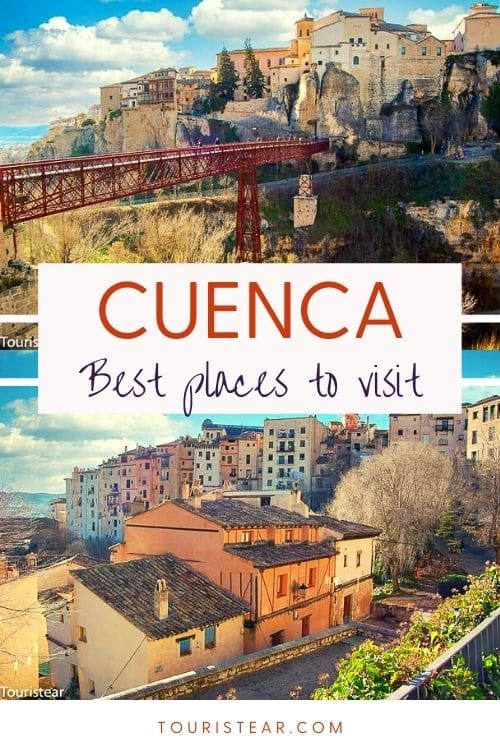10 Best Things To Do in Vitoria-Gasteiz in 1-Day
Vitoria is a city that maintains a medieval part and a modern part decorated with colorful murals. It is less touristy than Bilbao or San Sebastián, giving the visit a special charm.
But, despite being less touristy, Vitoria has many things to offer visitors, so in today’s post, we tell you what to see in Vitoria-Gasteiz in one day and one night. Let’s go!
- Side Trip: La Rioja Wine Tour (English and Spanish speaking guide)
- La Rioja Wine Tour with Lunch (English and Spanish speaking guide)
Visit Vitoria-Gasteiz’ Medieval Almond
The part of the historic center of Vitoria is called the “almond” because it has an almond shape seen from above.
The 11th-century walls partly surround the Medieval Almond, and inside there are very well-preserved 15th-century buildings and watchtowers.
Also, in the old town, you can see Renaissance-style buildings such as the Palacio de Bendaña and Escoriaza-Esquivel.
And if you fancy green areas, Vitoria is surrounded by “the green ring” this area is well known for its parks and natural spaces. I’ll tell you more about it below.
The Medieval Almond of Vitoria
In the old town of Vitoria, you can see many exciting things; the best thing is to let yourself go and walk through its streets.
If you see a very high slope, don’t worry; they have mechanical treadmills to make the climb easier and effortless. You can also go up the stairs if you want.
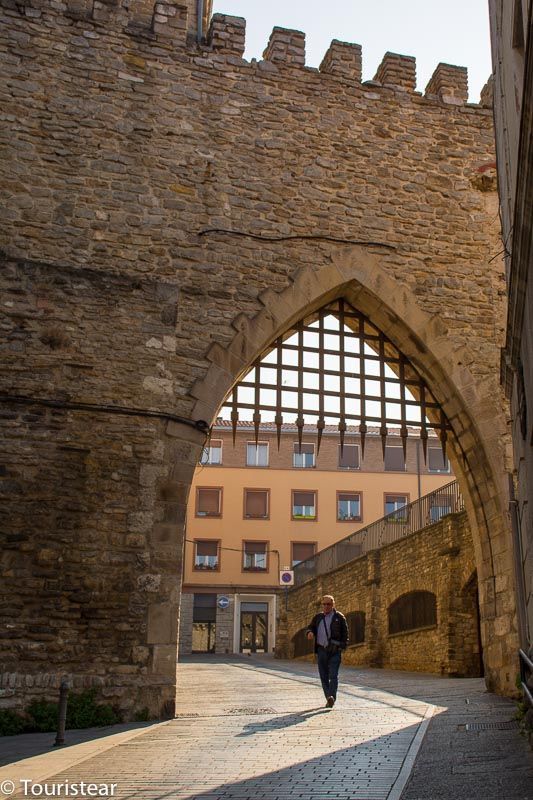
Inside the Almendra, you find the old cathedral, called Santa María Katedrala, the Tower of the “Hurtado de Anda,” and on the opposite side (it is a delightful walk).
You have several churches such as San Vicente Mártir, San Pedro and San Miguel Archangel.
Cathedral of Santa Maria of Vitoria
The Cathedral of Santa Maria is the old cathedral. There is a guided tour program called “Open for works.” With this visit, you will take a walk through the cathedral’s history, where you can discover the secrets of this building and the city.
If you did not know, it has been declared a World Heritage Site since 2015.
Next to the cathedral, you can see the statue of Ken Follett, the writer of the Pillars of the Earth saga, who based his novel World Without End on this same cathedral.
In the Plaza de España is the tourist office, where you can ask for a map of the city and tourist information.
Plaza de la Virgen Blanca (White Virgin Square)
The Plaza de la Virgen Blanca communicates with the Plaza de España.
This is where you can find the Vitoria-Gasteiz sign, made as a vegetable sculpture. On Postas street, in the background, you can see the Church of San Miguel Arcángel.
In the center of the square, you can see a commemorative monument of the Battle of Vitoria.
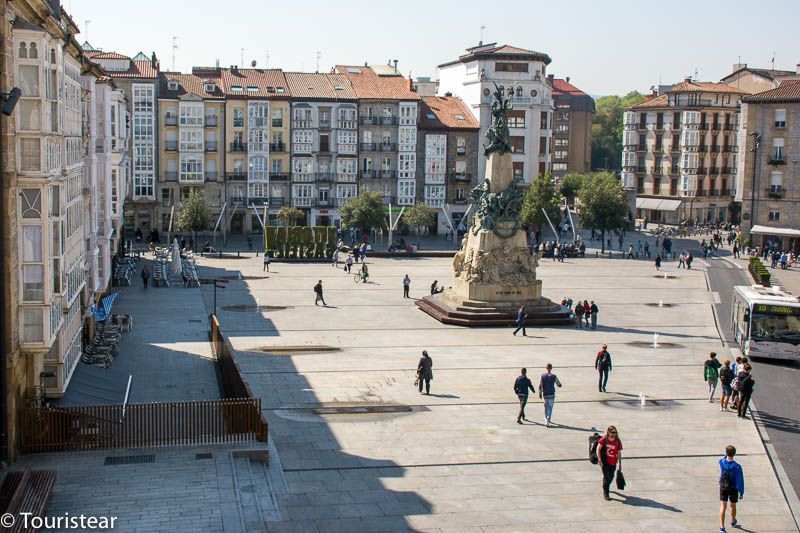
If you want, you can take a guided tour of the city of Vitoria (only in Spanish), it costs only €8 for adults (children under six years free and €6 from 6 to 10 years), and the visit starts from the tourist office in Plaza de Spain.
*Right now, this tour is only in Spanish. Take a look at the Tourism Office to see if they have guided tours in your language.
With the guided tour, you go through the historical center, the medieval wall to the Palace of Montehermoso, and the Cathedral of Santa María.
They also make several stops to tell a little about the history of the different buildings and monuments you will come across, such as the church of San Miguel Arcángel or the Palacio de Villa Suso.
If you like mysteries and legends, you cannot miss this night tour (only in Spanish for now), where you will discover another history of Vitoria. It is also done through the historic center, and the meeting point is at the tourist office.
From the Plaza Virgen Blanca, you can visit the New Cathedral called María Inmaculada Madre de la Iglesia (Mary Immaculate Mother of the Church) and stroll through the Bishop Fernandez de Pierola Gardens, the Florida Park, and the Zulueta Palace.
The Green Ring: Anillo Verde
The “Anillo Verde” of Vitoria is a set of parks located around the city.
Since 1993 they have been rehabilitating the different parks and have turned a degraded area of the city into one of the favorite leisure spots for locals and visitors.
In addition, the Green Belt became a place of high ecological value.
The most fabulous place in the Green Ring of Vitoria-Gasteiz is Salburua Park. Here is the Nature Interpretation Center, where you will learn about flora and fauna of Alava. The best time to go is at sunset.
If you go by car, you can park very quickly. You can also go for a bike ride or by bus.
Route of the Murals
I was surprised by the large number of murals that I saw in the center of Vitoria. Of course, I knew there was a lot of street art, but I didn’t think it would be so pretty.
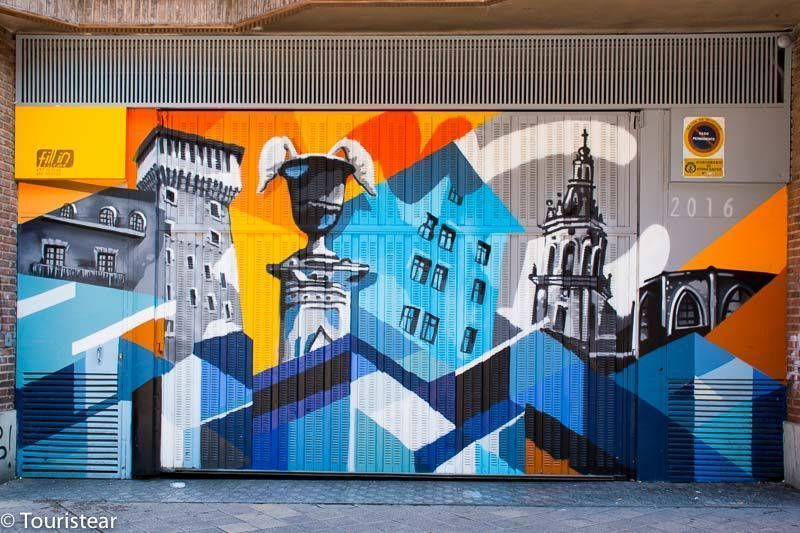
I wandered around Vitoria one weekday morning, looking for its murals touring the Almendra.
These were created through collective workshops in which many of its inhabitants participated.
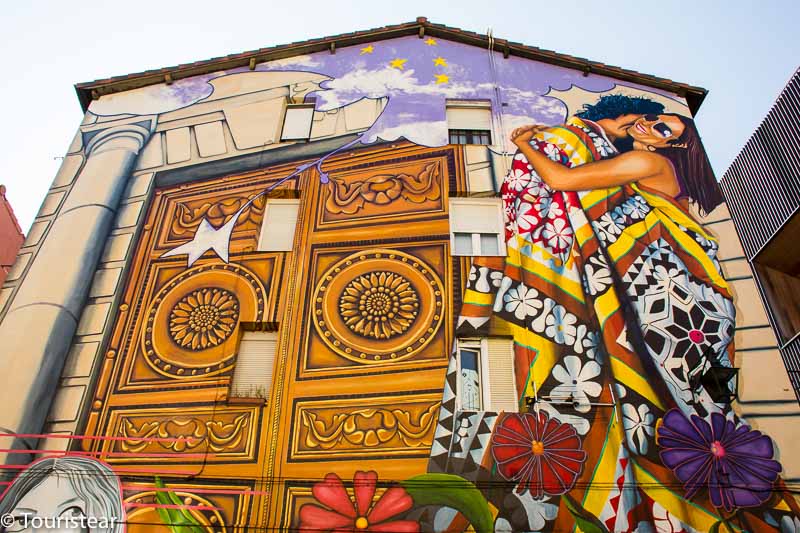
I could tell you in this post street by the street where to go, where to turn, but I think I would lose the fun of looking for the Murals. At least for me! I never pay attention to the itineraries that indicate you street by street.
Must-Visit Places in Vitoria-Gasteiz
This section will guide you through the best places to visit in Vitoria to enjoy this city and not miss anything to see.
Museums of Vitoria-Gasteiz
Museum of Fine Arts
Looking at it from the outside, it is beautiful: a building built in 1912. At first, it was a private residence of Augustin-Zulueta.
It is surrounded by gardens and inside full of works of art, including the deposits of the Prado Museum.
Near the Museum of Fine Arts is the Museo de la Armería, where you can find weapons from medieval times found during archaeological excavations in northern Spain. There are also exciting pieces from Africa and Japan.
Artium Museum, Basque Museum of Contemporary Art
It is one of the most important museums of contemporary art in Spain. In the permanent collection, you can see more than 3 thousand works! In addition, it is a cultural center that organizes artistic activities and international exhibitions.
It is quite visible in the city’s center, in a modern building. Go to the Museum page and check if there are activities of interest for your travel dates.
Fournier Playing Card Museum
Yes, just like that: this museum probably houses the best collection of playing cards globally. In addition, it is located in the Bendaña Palace, from the 16th century, in the heart of Medieval Almond.
In a recently built building, right next door, is the Archaeological Museum. Here you can see the discoveries in the area from prehistory to the Middle Ages.
Museum of Natural Sciences
This museum houses the Torre de Doña Ochanda, a strong house from the end of medieval times.
Inside, you can see:
- the exhibition on the amber deposits of Álava (one of the most important in the world!),
- the fossils found in the area of the Alava capital
- and a collection of Spanish minerals from the 20th century.
Palaces of Vitoria-Gasteiz
Walking through Vitoria, it is very easy to come across old palaces from different eras.
Apart from the Palace of Augustín-Zulueta, which houses the Museum of Fine Arts, I recommend that you take a look at these magnificent buildings:
Escoriaza-Esquivel Palace
Built-in the 16th century, it is one of the best examples of Basque Renaissance architecture and the best preserved of the 7 Renaissance palaces in Vitoria.
It is located within the Old Town, a few meters from the Cathedral of Santa María.
Cordon House
It’s located on Calle Cuchillería, so it’s easy to go unnoticed among all the bars and restaurants 😉 It’s a medieval gothic-style tower, rebuilt into a palace at the end of the 15th century.
But it is worth going inside, since the main room’s ceiling is impressive and, in addition, it has an exhibition of popular Basque furniture.
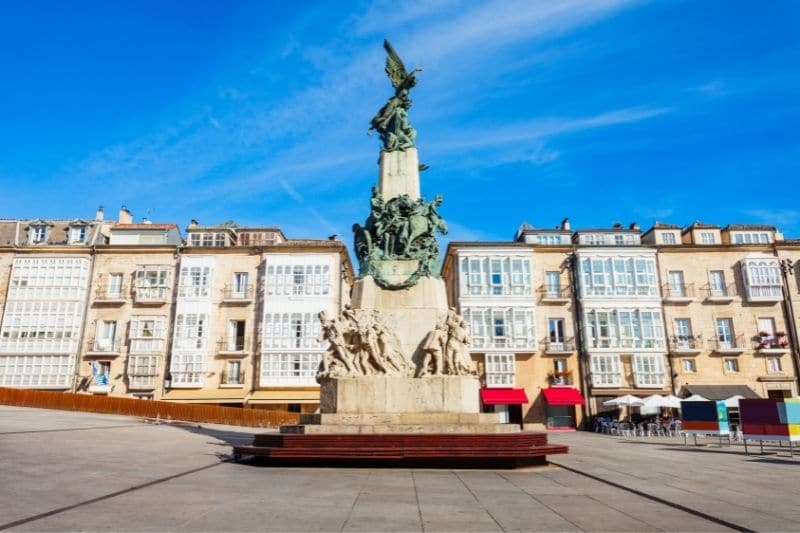
Zulueta Palace
Like a few others in the area, this building was built at the beginning of the 20th century, thanks to the money earned by adventurers in Cuba.
It is located near the Museum of Fine Arts, and the most beautiful path that leads from the Medieval Almond to the palace is along the Paseo de la Senda.
It is an outdoor route of about 3 km in the middle of nature, with banana trees providing shade on summer days.
It’s worth it, as Vitoria came first in the 2012 European Green Capital contest (it’s the only Spanish city with this title!).
Strolling through Vitoria-Gasteiz
Vitoria is a relatively small city and perfects to visit on foot. You are going to visit the most exciting places that are outside the Medieval Almond and its Walls.
Cuchillería, Correría and Herrería streets
They are located just past the Walls surrounding the Medieval Quarter. Their names come from the artisans who lived and worked there.
They invite you to visit them, take a walk, look at the old houses (already restored), and stop at their many bars and restaurants. On Cuchillería street are the Casa del Cordón and the Fournier de Naipes Museum.
To the north, Calle Cuchillería becomes Calle Chiquita and where it joins Calle Correría we find the Plaza de la Burullería.
You can see the Torre de Los Hurtado de Anda, built in the 15th century in a Gothic style. It is one of the oldest buildings currently preserved in Vitoria. It was part of the defensive construction of the city.
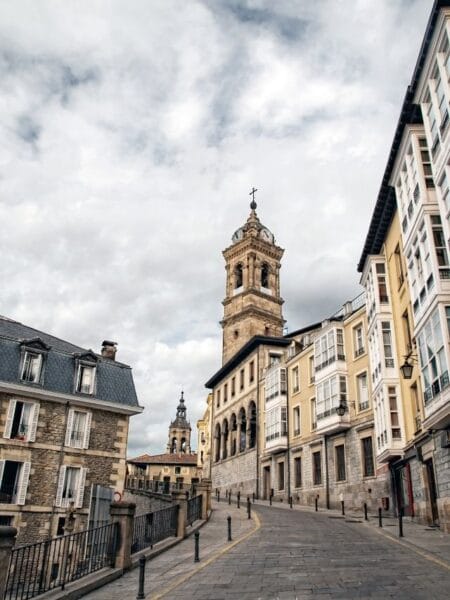
Going south along Correría street, you arrive at Plaza del Machete. Its name is due to the machete on which the representatives of Vitoria used to swear their positions.
It is a perfect place to take a break in a bar with views of the 16th-century Palace of Villa Suso.
Going further south is Plaza España, also called Plaza Nueva. It is a square surrounded by buildings and arcades. The City Hall of Vitoria, built in neoclassical style, is located there.
You arrive at the Plaza de Los Fueros, following the road with the Monument to the Fueros.
It is located south of the Old Town of Vitoria. It has a peculiar triangular shape, and in August, it hosts the festivities of the city’s patron saint, La Virgen Blanca, with concerts and other cultural initiatives.
Green Areas
Vitoria-Gasteiz is a green city thanks to the parks, trails, and a ring of nature surrounding it. In recent years, much importance has been given to these areas; they have been developed and cared for with love.
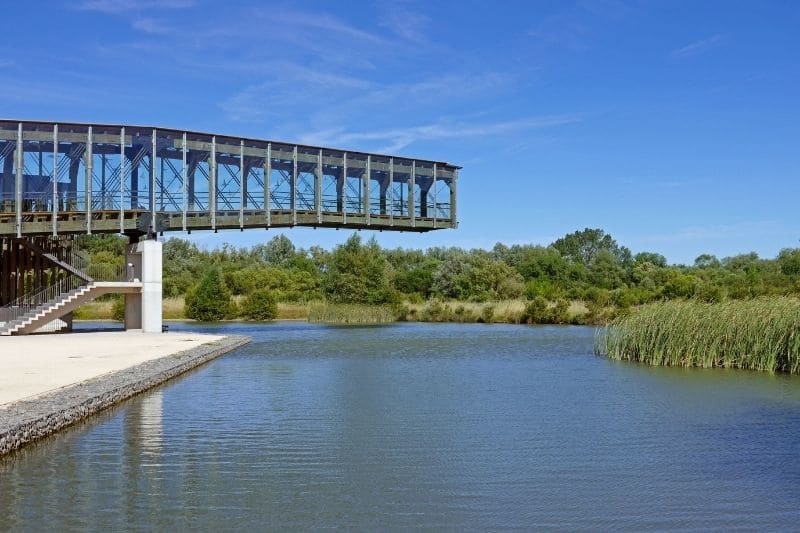
Walking through the streets of this Basque city, it is impossible not to enjoy the green corners that it offers.
Apart from the Paseo de la Senda that connects the Historic District with the Museum of Fine Arts, I recommend that you breathe fresh air in the Parque de la Florida, which is located next to said Paseo.
Florida Park
Built in 1820, it recalls romantic parks in the French style of the time. Its labyrinth-shaped paths pass through various points of interest, such as the kiosk, the grotto, the waterfall, the stream, or the lovers’ bench.
It has a gigantic Nativity scene with more than 200 life-size figures during Christmas.
Oh, and if you’re looking for love, remember that there’s a tree there that, according to tradition, helps single people find their better half 🙂
Botanical Garden
The Olarizu Botanical Garden is located in the Basque capital’s Green Belt. The best time to visit it is, without a doubt, in spring, since it is when you can appreciate all the colors it offers.
It is a vast park; it extends over more than 120 hectares, an ideal place to rest, gather strength, and, incidentally, learn about nature.
Gastronomy: Where to eat in Vitoria-Gasteiz?
The gastronomy of the Basque Country is well known, and in Vitoria, it was not going to be less. There are more than 20 tapas routes! Ask for your route at the tourist office.
You can also go into the places that most catch your attention and make your route or go with a guide and do the Pintxos tour, including six pintxos and three drinks.
You can try the famous Basque pintxos that leave no one indifferent, or you can order “raciones” or a menu, depending on your budget or what you want. Also, if you go on Thursdays, there is the “pintxo pote,” the best-known street for the “poteo” is Cuchillería street.
Vitoria seemed a little cheaper than San Sebastián and Bilbao regarding gastronomy, and we ate wonderfully.
Where to Stay?
We stayed at the AC Hotel General Alava. It is not in the heart of Almendra, but it is well located (about 5 minutes from the cathedral) and has parking.
In addition, there is a free parking space in the area behind the hotel on Chile street.
The hotel rooms are OK, the bed is comfortable, and the wifi worked surprisingly well for us. It is evident that it is next to the congress building, and they have many business clients here.
Plan Your Trip through the Basque Country
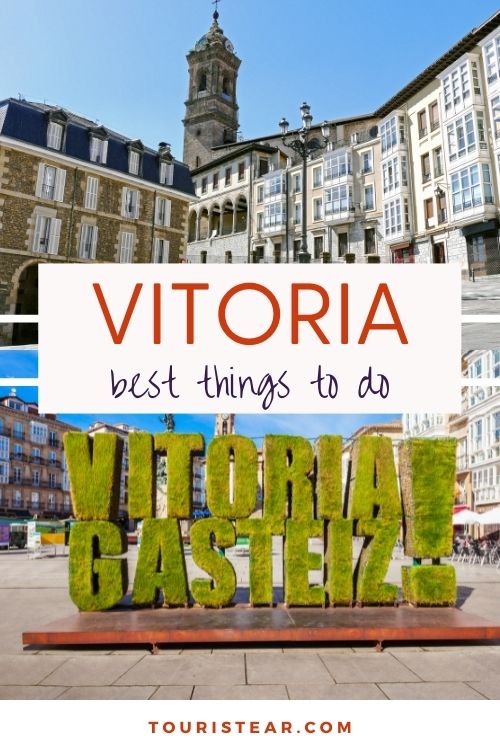
Last Updated on 22 September, 2023 by Veronica
Disclosure: Some of the links on this post are affiliate links, meaning at no additional cost to you, I may earn a small commission if you click through and make a purchase.
Author: Veronica
Vero, a seasoned traveler, has explored 25 countries and lived in five, gaining a rich perspective and fostering an infectious passion for travel. With a heart full of wanderlust, Vero uncovers the world’s hidden gems and shares insights, tips, and planning advice to inspire and assist fellow adventurers. Join Vero and let the shared passion for travel create unforgettable memories.
